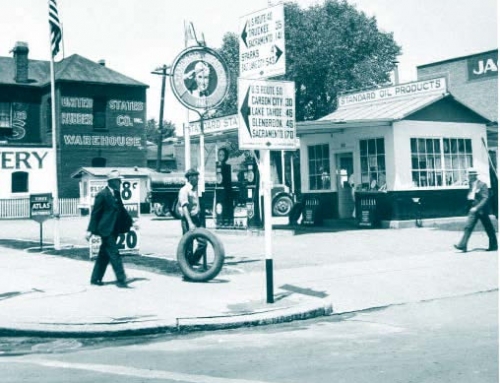At a recent conference in Berkeley sponsored by the University of California Transportation Center, On the Road to Sustainability: From Research to Practice, researcher after researcher discussed the climate implications of a wide range of transportation issues. Participants heard how better coordination of systems for dealing with empty freight containers could reduce the numbers of truck trips; what effects, if any, various finance and land use policies have on the amount of driving people do; what new fuels are in the works and whether they hold potential for greenhouse gas reductions; how much aggregate— rock—is needed to complete California highway projects (a lot) and how much of it must be transported from overseas quarries. Three full days were not anywhere near enough to describe the dilemmas facing transportation due to the threat of climate change. The culminating session brought focus to the urgency needed to solve these dilemmas, with UCTC Director Elizabeth Deakin’s daunting presentation on projections for growth in California (which could be taken as an illustration of worldwide growth), and ITS-Davis Director Daniel Sperling’s discussion of work being done by the Air Resources Board to meet California’s AB32 (the Global Warming Solutions Act).
AB32 mandates a reduction in greenhouse gases produced in California to 1990 levels by 2020—essentially a 25 percent reduction from projected levels. Transportation produces forty to fifty percent of the CO2 in California. Sperling pointed out three areas where transportation as we know it must change: 1) cars must be more efficient; 2) fuels must be cleaner; and 3) people must drive less. Work is proceeding on the first two, by government and industry, but the third one poses a different kind of challenge.
Until very recently, legislators and other elected officials rarely dared to openly discuss pricing strategies aimed at reducing driving. Tolls and higher gas taxes, which are designed to shift environmental costs onto those who create them, have been a political dead end. But David King, Michael Manville, and Donald Shoup have a suggestion, elucidated in this issue, for a way to gain political support for pricing roads. Their ideas may make tolls not only palatable—that is, politically feasible— but perhaps even popular. Or at least popular enough to get them implemented, and thus perhaps to cut the amount of driving people do.
Two other essays in this issue shed light on the little-understood area of consumer behavior in reaction to changing regulations and prices. Tom Turrentine, Kenneth Kurani, and Rusty Heffner found that very few people spend time analyzing fuel costs when they set out to buy a car, and in fact those who buy very fuel efficient cars do so for reasons having more to do with feelings than actual costs. Ken Small and Kurt Van Dender take a close look at the “rebound effect” whereby people who do buy more fuel efficient cars actually drive more, thereby reducing the potential fuel savings promised by CAFE standards. They find reason to be hopeful: the authors discovered that not only is this effect small, but that over time it is shrinking; therefore policies that require cars to be more efficient, like CAFE standards, do in the end result in less fuel use.
Monumental changes are necessary if we are going to avoid global climate change. Herein are a few suggested first steps.
—Melanie Curry
Editor






